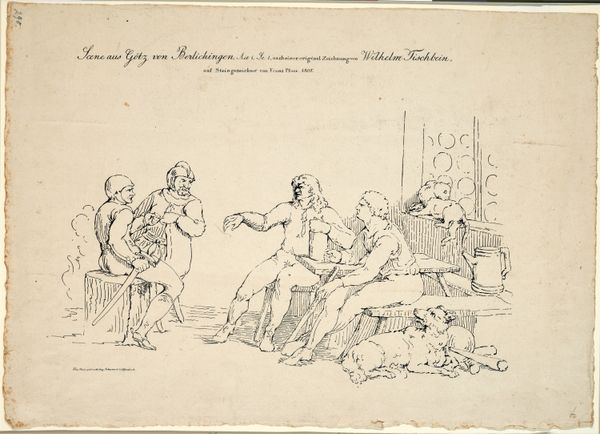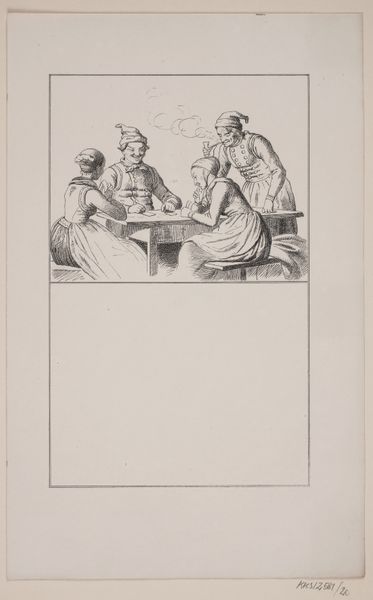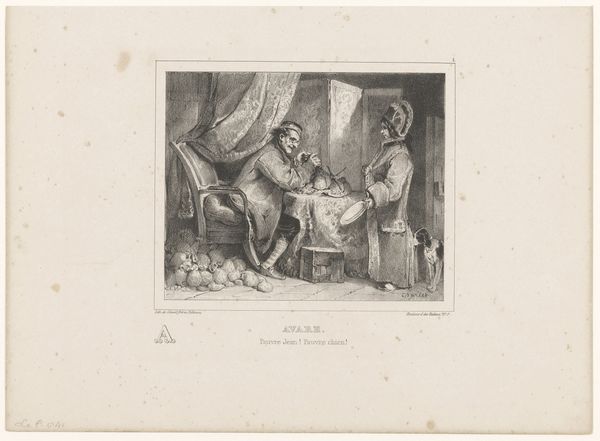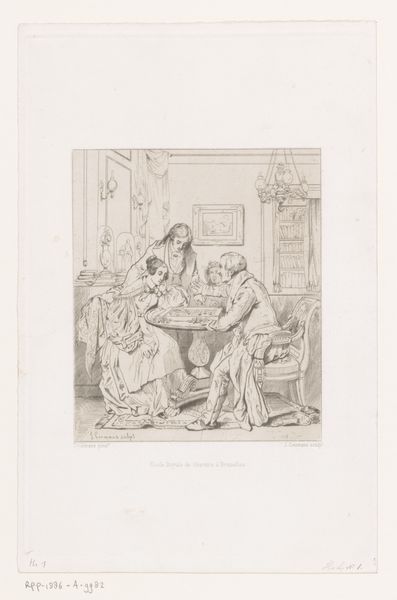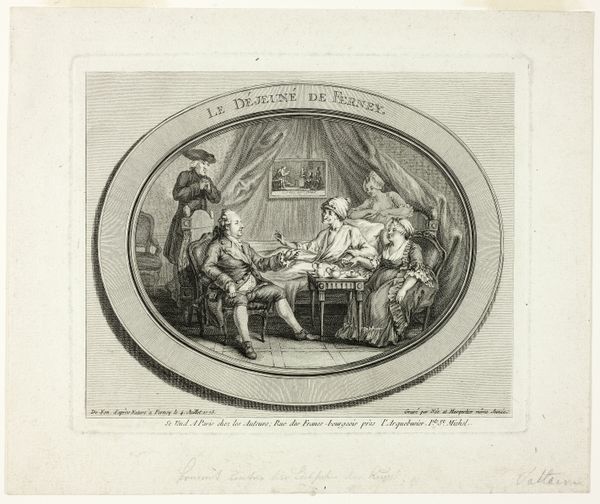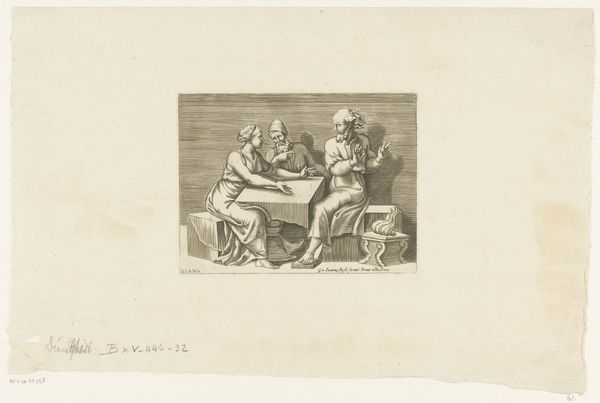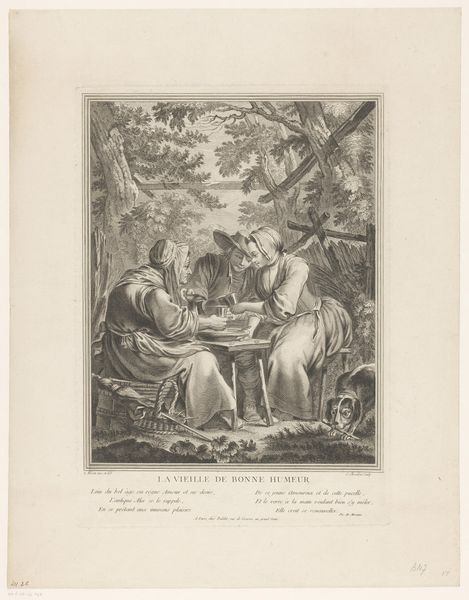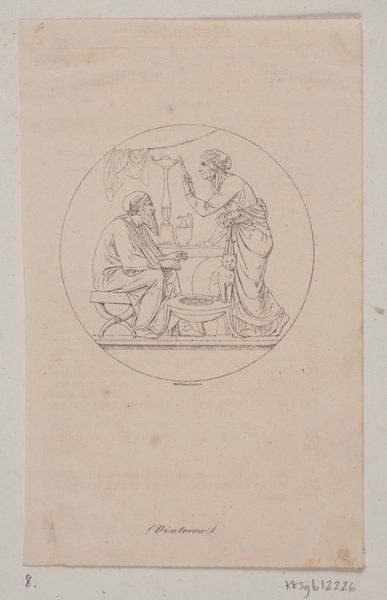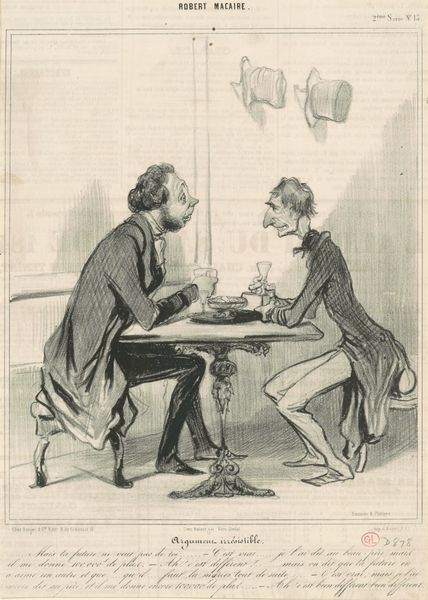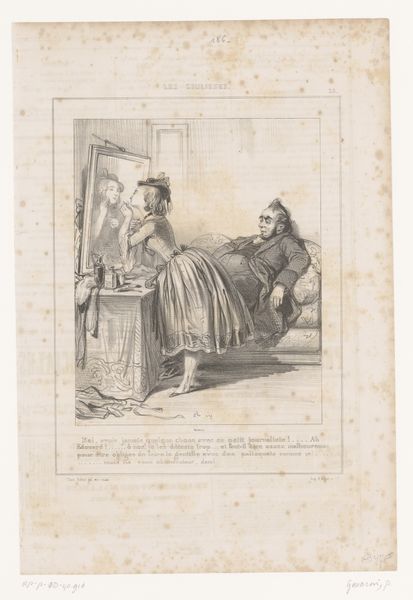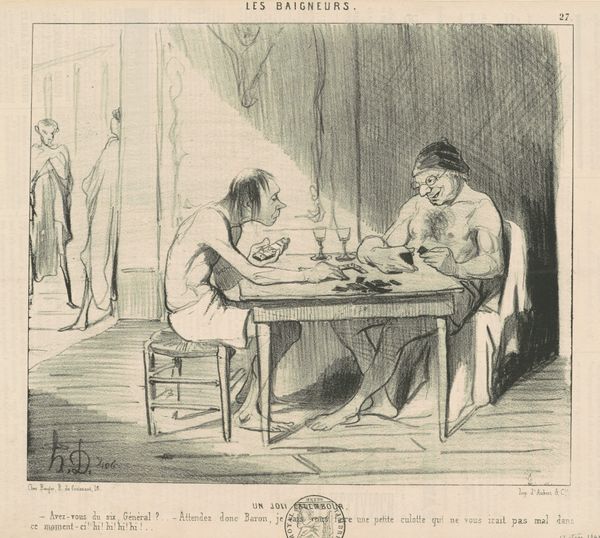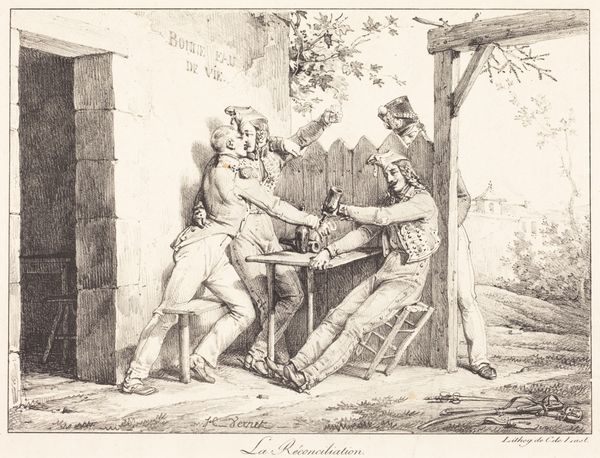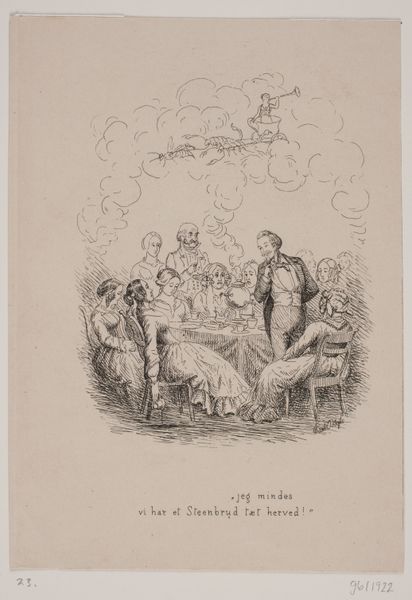
Retzsch's Extraordinary Design of Satan Playing at Chess with Man for his Soul 1837
0:00
0:00
drawing, print, engraving
#
drawing
#
allegory
#
narrative-art
# print
#
figuration
#
romanticism
#
history-painting
#
engraving
Dimensions: Sheet: 11 13/16 × 17 5/16 in. (30 × 44 cm)
Copyright: Public Domain
Editor: So, this is "Retzsch's Extraordinary Design of Satan Playing at Chess with Man for his Soul," an 1837 engraving. It’s striking how stark the contrast is between the figures—Satan looks almost gleeful, while the man is clearly distraught. I’m curious, what strikes you when you look at this piece? Curator: I immediately consider the material conditions of its production. Engravings, especially those widely reproduced like this one, speak to the anxieties and moral frameworks of the burgeoning middle class. This image isn't just about spiritual struggle; it’s a commodity circulated for consumption. Think about the labor involved, the access to printmaking technologies—how did that influence the artwork's dissemination and impact? Editor: That’s an interesting point. I hadn't thought about the production side so directly. So you’re saying its popularity relies not just on its religious narrative but also on its accessibility as a reproducible object? Curator: Precisely. Consider the implications: the piece speaks to the mass production of morality, visualizing intangible anxieties through a tangible, reproducible image. How does the act of repeatedly recreating this image—each line etched and pressed—affect the way its message is absorbed? It moves beyond art; it becomes manufactured belief. Editor: That definitely reframes how I see it. It's not just a depiction of good versus evil, but a commentary on how ideas are disseminated and consumed. Curator: Indeed. It asks us to consider who has access to produce and circulate such powerful imagery, and what social structures support that process. Editor: This makes me appreciate the artwork even more, thinking of its materiality and production. Thank you for your insight! Curator: My pleasure. It's always fascinating to unpack how art functions within the material realities of its time.
Comments
No comments
Be the first to comment and join the conversation on the ultimate creative platform.
